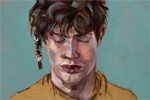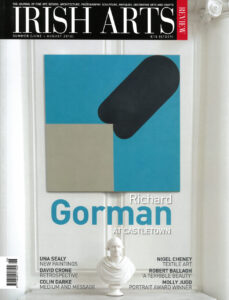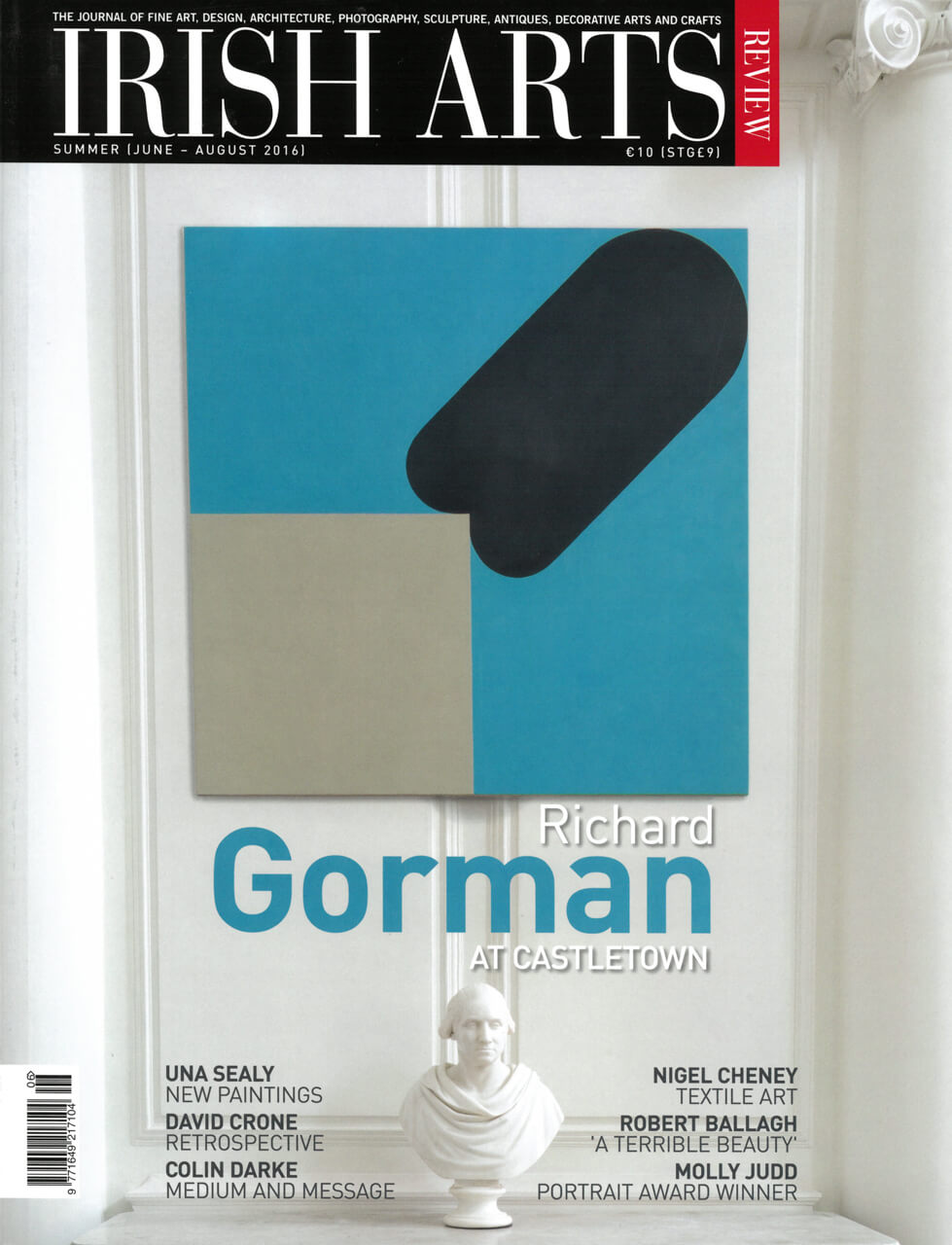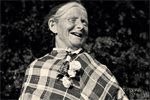

Isabella Evangelisti previews a collection of new paintings from Una Sealy that take as their focus the edge between land and sea, youth and maturity, on view at the RHA, Dublin.
Una Sealy’s eagerly awaited exhibition, her first solo show in almost four years, comprises a collection of landscapes and portraits. Devotees of this artist’s work will expect a celebration of the stuff of life; domestic detritus elevated to the symbolic, or merely celebrated for its banality and in her portraits an insightful gaze revealing an awareness of the psychological nature of her sitters. Here we have all of this and more, a newly deepening of the vision that gives these latest works an added poignancy. It seems as if the artist has taken a step back so that her gaze is now slightly removed, her inclusion of objects and narrative details more selective, with the result that these works have a more pared down, contemplative feel. As usual Sealy’s work is deeply personal, the landscapes revisiting the familiar places and well-trodden paths along a stretch of coastline north of Dublin where she lives, while the portraits celebrate her own children and their friends.
The centrepiece of the show is the vast expansive triptych of the Baldoyle estuary entitled Last Bend for Home (Fig 5). The privileged high viewpoint is the result of three months spent painting every day in Baldoyle Library by kind permission of Fingal County Council. From that elevated position Sealy could observe the fleeting weather, shifting sands and scudding clouds that together lend this painting its wonderfully amorphous nature. It depicts that indeterminate space where land meets ocean, the deep extended shoreline that invites reflection and meditation, but at the same time is unknown, slippery and uncontrollable. There is little or no evidence of human presence save for the distant dwellings and a few tiny figures lost in the vastness of the space. It is the lifebuoy hanging on the wall in the foreground, a tiny accent of sharp colour that anchors the viewer visually and symbolically, re-orienting them to the concept of home, with its implied promise of safety, warmth and sustenance.
Sealy is an artist with both roots and antennae, looking backwards through images that are rooted to particular places and their history such as disused industrial buildings up for redevelopment, which will inevitably bring change to the life of the village.
Despite the centrality of impressive landscapes, one gets the idea that, for Sealy, there can be no idea of place without the people who inhabit it, the two are simply indivisible. So the inaccessible, liminal geographical spaces depicted in the landscapes find their equivalence in the similar psychological states of youth seen in the portraits.
It takes a Village (Fig 3), for instance, combines landscape and portraiture to create the sense of belonging that so characterizes this exhibition. It portrays the artist’s daughter in the family garden with the rooftops of the village of Howth beyond, the place where both mother and daughter are rooted, yet the young woman seems preoccupied with her own thoughts, her gaze is directed away, towards the future and her own, as yet unfulfilled, destiny. Accompanying this portrait is a series of smaller ones of her circle of friends, completed in single sittings and depicting only the faces, with no extraneous detail. The use of broad brush strokes and loosely modelled tones give these faces a fresh, luminous immediacy that conveys that half-formed beauty of youth, so often a source of needless self-consciousness in the young. They reveal inchoate characters, on the cusp of adulthood, full of promise and the excitement of ideas forming on the edge of consciousness. These familiar faces, of family and friends, always manage to convey a strong sense of relationship and connectedness, to the artist, to each other and to their surroundings. Taken together with the landscapes they evoke the changing environment and the progress of the generations who live there. They are nostalgic without being sentimental. Sealy is an artist with both roots and antennae, looking backwards through images that are rooted to particular places and their history such as disused industrial buildings up for redevelopment, which will inevitably bring change to the life of the village. But her gaze is directed forwards too, towards generational change and renewal, in the faces of youth.
These are heartfelt paintings imbued with memory, and although they represent particular people and places in the artist’s life, they evoke universal emotions that will surely find resonances and associations in every viewer.
All images ©The Artist. Photography ©Gillian Buckley.
Una Sealy ‘The Edge’ Ashford Gallery, RHA, Dublin 8 July-20 August 2016.
Isabella Evangelisti is a freelance art historian based in Dublin and Belfast.



